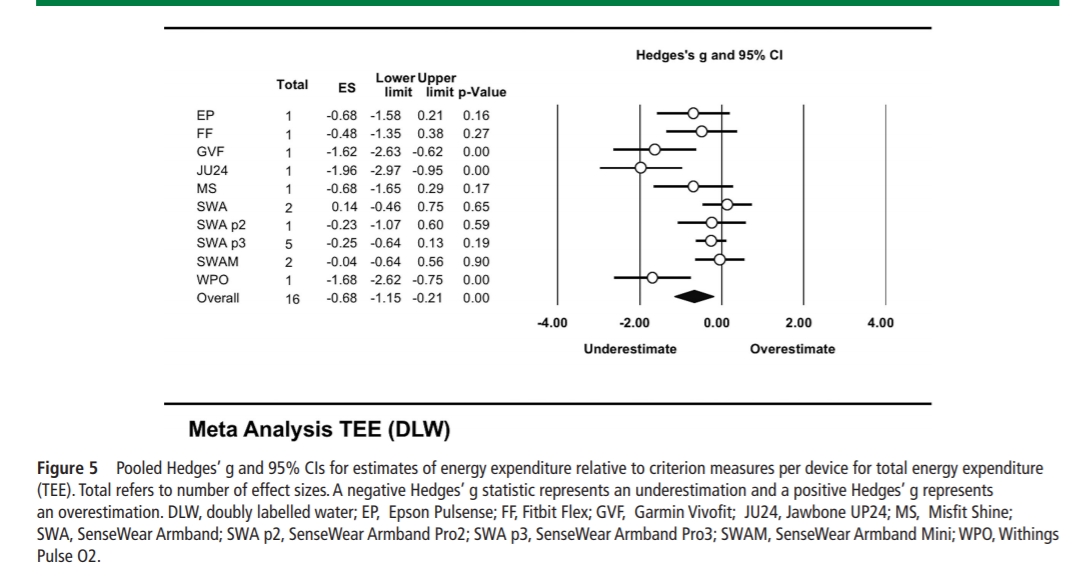How well do activity monitors estimate energy expenditure? A systematic review and meta-analysis of the validity of current technologies
Ruairi O’Driscoll Br J Sports Med 2020;54:332–340
Abstract
Objective To determine the accuracy of wrist and arm-worn activity monitors’ estimates of energy expenditure (EE).
Data sources SportDISCUS (EBSCOHost), PubMed, MEDLINE (Ovid), PsycINFO (EBSCOHost), Embase (Ovid) and CINAHL (EBSCOHost).
Design A random effects meta-analysis was performed to evaluate the difference in EE estimates between activity monitors and criterion measurements. Moderator analyses were conducted to determine the benefit of additional sensors and to compare the accuracy of devices used for research purposes with commercially available devices.
Eligibility criteria We included studies validating EE estimates from wrist-worn or arm-worn activity monitors against criterion measures (indirect calorimetry, room calorimeters and doubly labelled water) in healthy adult populations.
Results 60 studies (104 effect sizes) were included in the meta-analysis. Devices showed variable accuracy depending on activity type. Large and significant heterogeneity was observed for many devices (I2 >75%). Combining heart rate or heat sensing technology with accelerometry decreased the error in most activity types.
Research-grade devices were statistically more accurate for comparisons of total EE but less accurate than commercial devices during ambulatory activity and sedentary tasks.
Conclusions EE estimates from wrist and arm-worn devices differ in accuracy depending on activity type. Addition of physiological sensors improves estimates of EE, and research-grade devices are superior for total EE. These data highlight the need to improve estimates of EE from wearable devices, and one way this can be achieved is with the addition of heart rate to accelerometry.














